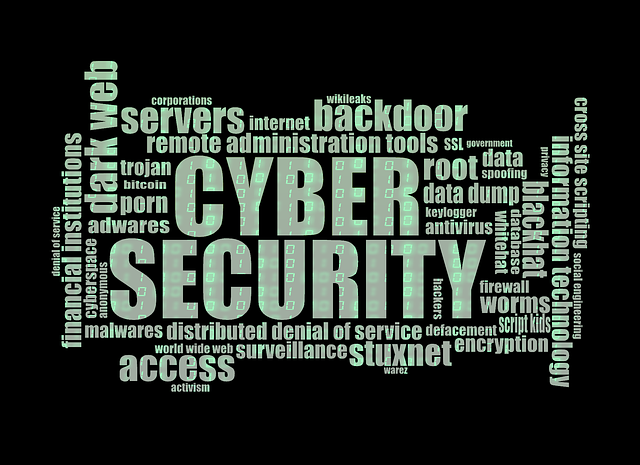Real-time threat monitoring, driven by advanced IT support for banks using AI and machine learning, is crucial in the banking sector to combat evolving cyber threats. Regular cybersecurity audits assess network architecture, data protection, and employee training, identifying vulnerabilities and ensuring alignment with regulatory standards. Proactive strategies like firewalls, encryption, and multi-factor authentication, coupled with regular audit findings, fortify bank defenses against digital threats in today's dynamic security landscape.
In today’s digital landscape, real-time threat monitoring and cybersecurity audits are indispensable for banks seeking robust IT security. This article explores the critical role these components play in safeguarding financial institutions from evolving cyber threats. We delve into understanding real-time monitoring, its significance in banking, and how to implement effective IT security measures. Additionally, we discuss continuous improvement through regular audits, underscoring why this iterative process is vital for comprehensive IT support in banks.
Understanding Real-time Threat Monitoring
Real-time threat monitoring is an indispensable practice in modern cybersecurity, especially for critical sectors like banking. With the constant evolution of malicious cyber activities, it’s no longer enough to rely solely on traditional security measures. IT support for banks plays a pivotal role here, as they employ advanced tools and technologies to detect and mitigate threats instantaneously. This dynamic monitoring involves continuous scanning and analysis of network traffic, system logs, and user behavior patterns to identify potential risks in real-time.
By leveraging machine learning algorithms and artificial intelligence, IT professionals can swiftly respond to emerging threats. They can isolate suspicious activities, block malicious IP addresses, and even predict potential vulnerabilities before they’re exploited. This proactive approach ensures that banks maintain robust security posture, safeguarding their sensitive data and operations from ever-adapted cybercriminals.
The Role of Cybersecurity Audits in Banking
In the banking sector, cybersecurity audits play a pivotal role in fortifying defenses against evolving digital threats. These comprehensive assessments go beyond routine IT support for banks, delving into the intricate web of an institution’s security infrastructure. By examining network architecture, data protection protocols, and employee training, auditors identify vulnerabilities that could be exploited by cybercriminals.
Regular audits ensure that banking institutions maintain robust cybersecurity practices, aligning with regulatory requirements and industry best practices. This proactive approach to risk management is essential in protecting sensitive customer data, financial transactions, and the overall stability of the banking system from potential cyberattacks.
Implementing Effective IT Security Measures
Implementing robust IT security measures is paramount for banks aiming to safeguard their operations and customer data in today’s digital landscape. This involves a multifaceted approach, starting with comprehensive risk assessments to identify potential vulnerabilities. IT support for banks plays a pivotal role here, offering specialized expertise to analyze network infrastructure, applications, and data storage systems for any weaknesses that could be exploited by cybercriminals.
Once identified, these security gaps can be addressed through various strategies. This includes deploying robust firewalls, implementing encryption protocols for data transmission and storage, and adopting multi-factor authentication mechanisms. Regular cybersecurity audits conducted by IT professionals ensure that these measures remain effective against evolving threats, allowing banks to maintain a strong defensive posture in the ever-changing realm of digital security.
Continuous Improvement through Regular Audits
Regular cybersecurity audits are a cornerstone of effective real-time threat monitoring, especially in highly regulated sectors like banking. These audits, conducted by seasoned IT professionals with expertise in bank-specific security protocols, provide a comprehensive assessment of an institution’s defenses against emerging threats. By identifying vulnerabilities and pinpointing areas for improvement, these audits enable continuous optimization of security measures—a vital aspect in the ever-evolving landscape of cybersecurity.
For banks seeking robust IT support, regular audits offer a proactive approach to risk management. They ensure that security protocols stay current with evolving regulatory requirements and malicious attack vectors. Through meticulous analysis and targeted recommendations, these audits empower banking institutions to fortify their defenses, safeguard customer data, and maintain operational integrity in an increasingly digital environment.
Real-time threat monitoring and cybersecurity audits are indispensable tools for modern banking institutions. By implementing these measures, banks can fortify their defenses against evolving cyber threats, ensuring the security of sensitive financial data. Continuous improvement through regular audits, coupled with robust IT security practices, positions these financial institutions for sustained success in an increasingly digital landscape. Efficient IT support tailored to bank’s needs is key to staying ahead of potential vulnerabilities, thereby safeguarding both customers and operations.
